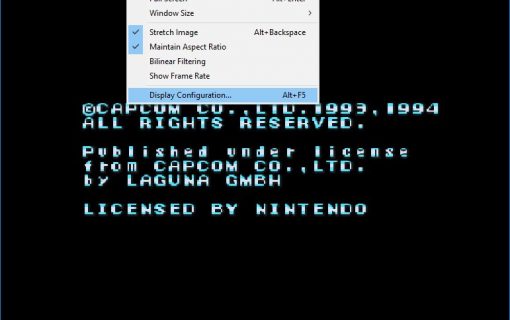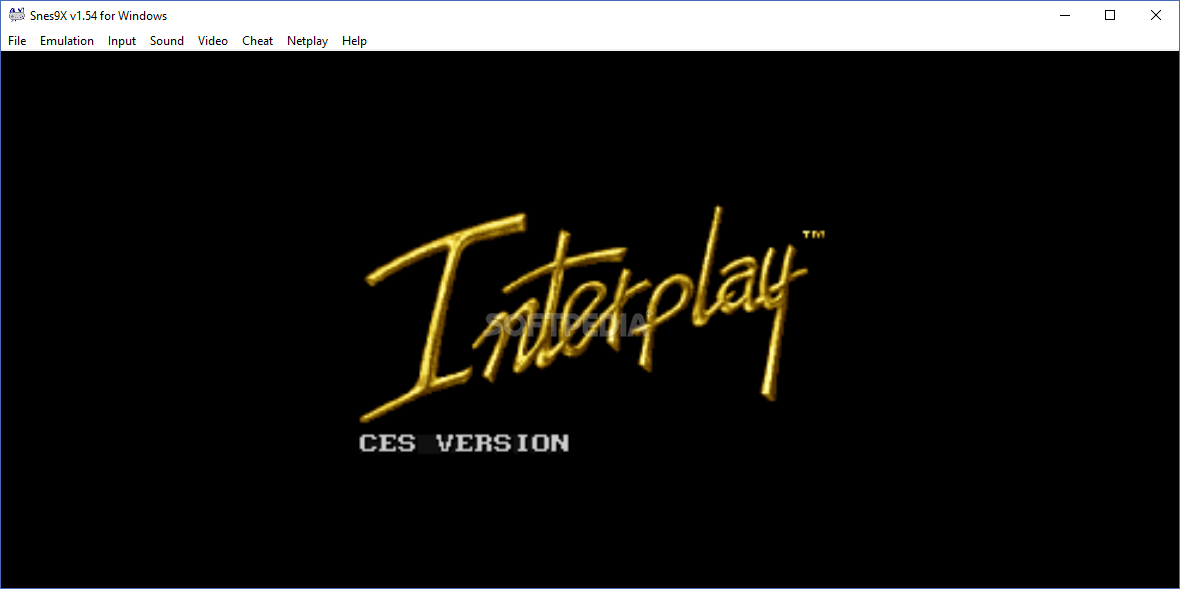

- SNES9X FAST FORWARD NOT WORKING SOFTWARE
- SNES9X FAST FORWARD NOT WORKING CODE
- SNES9X FAST FORWARD NOT WORKING WINDOWS
Methods Įmulators can be designed in three ways: purely operating in software which is the most common form such as MAME using ROM images purely operating in hardware such as the ColecoVision's adapter to accept Atari VCS cartridges.

Additionally, the development of some emulators has contributed to improved resources for homebrew software development for certain consoles, such as was the case with VisualBoyAdvance, a Game Boy Advance emulator that was noted by author Casey O'Donnell as having contributed to the development of tools for the console that were seen as superior to even those provided by Nintendo, so much so that even some licensed game developers used the tools to develop games for the console. The release of projects such as RPGe's English language translation of Final Fantasy V drew even more users into the emulation scene. This rapid growth in the development of emulators in turn fed the growth of the ROM hacking and fan-translation. This rise in popularity opened the door to foreign video games, and exposed North American gamers to Nintendo's censorship policies. Since then, Nintendo has generally taken the lead in actions against emulation projects or distributions of emulated games from their consoles compared to other console or arcade manufacturers. Nintendo pursued legal action to stop the emulator project, and while the original authors ceased development, the project continued by others who had gotten the source code. UltraHLE was the first emulator to be released for a current console, and it was seen to have some effect on Nintendo 64 sales, though to what degree compared with diminishing sales on the aging consoles was not clear. Legal attention was drawn to emulations with the release of UltraHLE, an emulator for the Nintendo 64 released in 1999 while the Nintendo 64 was still Nintendo's primary console - its next console, the GameCube, would not be released until 2001. Additionally, as the Internet gained wider availability, distribution of both emulator software and ROM images became more common, helping to popularize emulators. A curiosity was also Yuji Naka's unreleased NES emulator for the Genesis, possibly marking the first instance of a software emulator running on a console.

Programs like Marat Fayzullin's iNES, VirtualGameBoy, Pasofami (NES), Super Pasofami (SNES), and VSMC (SNES) were the most popular console emulators of this era. The first such recognized emulator was released around 1996, being one of the prototype projects that eventually merged into the SNES9X product. Nintendo's consoles tended to be the most commonly studied, for example the most advanced early emulators reproduced the workings of the Nintendo Entertainment System, the Super Nintendo Entertainment System, and the Game Boy. Few manufacturers published technical specifications for their hardware, which left programmers to deduce the exact workings of a console through reverse engineering. These early programs were often incomplete, only partially emulating a given system, resulting in defects. History īy the mid-1990s, personal computers had progressed to the point where it was technically feasible to replicate the behavior of some of the earliest consoles entirely through software, and the first unauthorized, non-commercial console emulators began to appear. Freely downloading or uploading game ROMs across various internet sites is considered to be a form of piracy, and users may be sued for copyright infringement. While emulation software itself are legal, emulating games is only so when legitimately purchasing the game physically and ripping the contents.
SNES9X FAST FORWARD NOT WORKING CODE
The code and data of a game are typically supplied to the emulator by means of a ROM file (a copy of game cartridge data) or an ISO image (a copy of optical media). Emulators are also a useful tool in the development process of homebrew demos and the creation of new games for older, discontinued, or rare consoles. More often than not, emulators carry additional features that surpass limitations of the original hardware, such as broader controller compatibility, timescale control, easier access to memory modifications (like GameShark), and unlocking of gameplay features.
SNES9X FAST FORWARD NOT WORKING WINDOWS
Project64 running Star Fox 64 on Windows 8Ī video game console emulator is a type of emulator that allows a computing device to emulate a video game console's hardware and play its games on the emulating platform. JSTOR ( February 2015) ( Learn how and when to remove this template message).Unsourced material may be challenged and removed.įind sources: "Video game console emulator" – news Please help improve this article by adding citations to reliable sources. This article needs additional citations for verification.


 0 kommentar(er)
0 kommentar(er)
